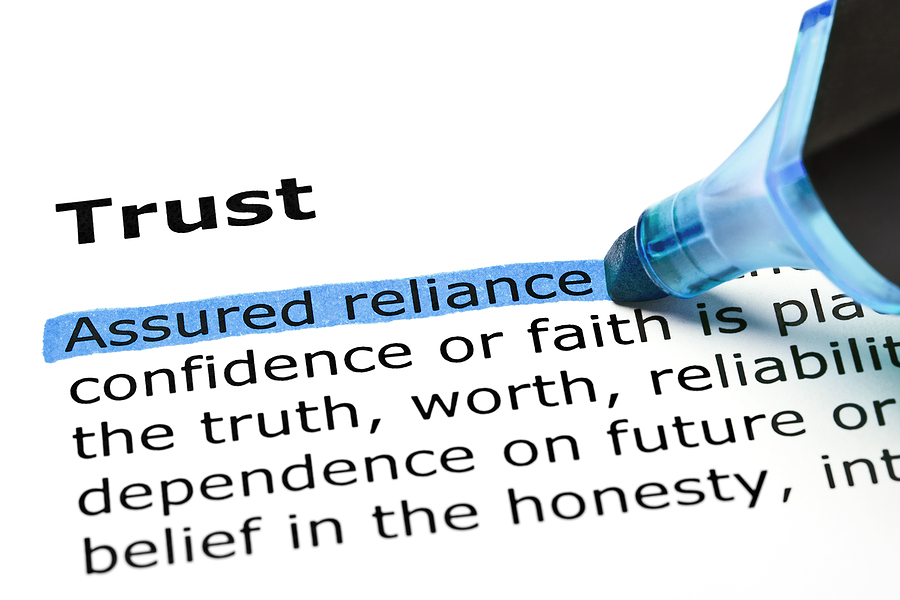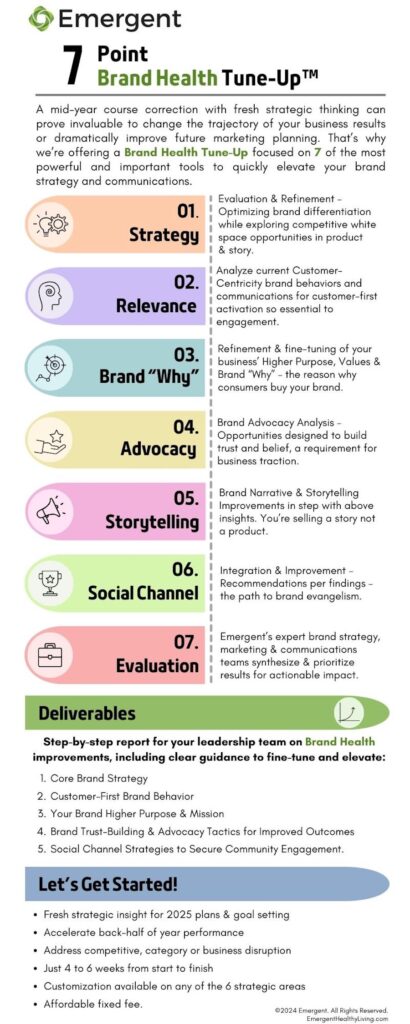
How Courage Will Revitalize Business Growth
October 14th, 2024 Posted by Emergent Brand Beliefs, Brand differentiation, brand marketing, Brand preference, brand strategy, Commoditization, Differentiation, Disruption, Emotional relevance, Marketing Strategy 0 comments on “How Courage Will Revitalize Business Growth”Fighting the creep of commoditization…
As all business categories grow and evolve, there’s a law of physics in the food, beverage and retail industries that comes into play to establish an implicit set of brand rules and behaviors. This often emerges in the form of industry accepted standards, regulatory requirements, consumer and trade partner expectations and competitive actions.
A pervasive condition, it creates a palpable magnetic momentum that pushes category participants towards the middle of the market — and away from whatever unique corner of the industry they originally occupied. Over time, it will manifest in comparable features, benefits, even pricing and product offerings. The edges of distinction get dull.
At its zenith it translates into sameness across business practices, supply chain standards and manufacturing processes – all helped along by growing similarity in product development as well as the technical processes employed for manufacturing.
The impact of category commoditization unleashed
As category players inevitably work to drive scale, secure efficiency gains, improved margins and retail leverage, brands level out their distinctiveness to appeal to a wider mass market. This happened in the dairy aisle cheese category as the major branded players eventually started to compete on price rather than disruptive innovation. The similarity in product choices and packaging helped commodify the consumer’s perception of quality.
The outcome? “Cheese is cheese is cheese” took root and the share leadership torch passed to private label products. Inevitable because the product experience wasn’t substantially different between private and national brands. This ushered in an era of tit for tat price wars as combatants worked to build share by reducing price at the expense of brand equity and margins.
We encountered this condition and moved to tackle it while representing Sargento. The agency/client team launched a multi-stage process aimed at repositioning the brand, optimizing the product portfolio and walking away from “all things to all people” forms of marketplace behavior. The resulting “premiumization” of the Sargento brand showed up in new European influenced package design, new value-added products called Artisan Blends that borrowed equity from artisanal cheese makers. Most important to success, breaking out required recasting who the core customer is. We narrowed and focused on a high involvement premium cheese consumer called The Food Adventurer – roughly 26% of the category shoppers.
The customer priority decision was key to breaking the back of commoditization. It pushed our marketing team to rethink everything from innovation to messaging, media and market strategies while building in separation from all other players in the dairy case. The impact was startling. Sargento brand strength and resilience multiplied, while also helping establish more control over what was a price-driven business. The impact resulted in share gains against a larger competitor and fostered a spirit of creativity that set the stage for break-through new category ideas like the Balanced Breaks snack cheese innovation.
We’ve observed commoditization conditions blossoming in other places such as cell phones, computers, airlines and mainstream cars. When meaningful brand differentiation and separation dissipates, market leverage moves almost automatically to favor expanded budget investments that chase “top of mind awareness.” When the brand isn’t remarkably, authentically different, dependency on profit sapping awareness spending is required to keep repeatedly reminding consumers of the product features. Whereas distinctive and differentiated brands are naturally alluring and therefore less dependent on heavy media spend to attract and retain a loyal following.
When meaningful differentiation starts to fade, courage is required
It takes vision, fortitude and courageous leadership to create and launch the antidote to commoditization. You must be willing to tear up the category conventions rule book and seek fresh territory in the form of:
- New and emerging markets where competition is still forming.
- Bravery to jump over category behavior traditions and pursue whitespace opportunities that offer a new solution.
- Become a disruptor – a challenger brand that pursues radical differentiation designed to shut the door on equity robbing price competition.
When a brand is informed by a clear set of values, a strong “why” and a purpose that brings deeper meaning beyond transactions, it’s easier to recognize the advance of commodity behaviors and react proactively.
Sound strategy ignites the engine
Pushing the envelope of new category creation is a dynamic and powerful exercise intended to dial the brand far enough to the right or left of the vanilla middle that a new, ownable category can be established.
- Distinctiveness here is the essence of sound strategy because the goal is to offer a product or service the consumer can’t get anyplace else.
Here’s the catch: the forces at work in every category that drive brands towards similarity are fierce. Thus, vigilance around observing the creep of commodity inducing behaviors in pursuit of a mass market are ever present. Simply said, you will face it eventually. Your courageous efforts to catch this early before it takes root will pay long term dividends.
The last thing you want to hear is the word “mature” to describe your brand, which is code for the plateau you reach just before tipping towards the slippery slope of declining relevance.
If this discussion has you thinking about remedies to ever-present commodity pressures in your category — and fresh thinking around renewed emphasis on differentiation — use the email link below to start an informal conversation about refreshing your plans and programs.
Looking for more food for thought? Subscribe to the Emerging Trends Report.
Bob Wheatley is the CEO of Chicago-based Emergent. Traditional brand marketing often sidesteps more human qualities that can help consumers form an emotional bond. Yet brands yearn for authentic engagement, trust and a lasting relationship with their customers. For more information, contact [email protected] and follow on Twitter @BobWheatley.






